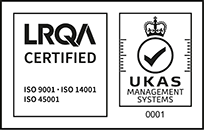Call us free on 0808 168 9540
Call us free on 0808 168 9540

As part of the 2019 Environment Bill, the government announced it would mandate net gains in biodiversity. This bill received Royal Assent in November 2021, and it is thought to become law across England by 2023. In some counties, it is already required.
A Biodiversity Net Gain (BNG) is quantitative tool used to deliver measurable improvements for biodiversity. Biodiversity net gain can be achieved through on site enhancement and habitat creation, as well as off-site measures.
Phlorum has extensive experience working with the biodiversity net gain calculators. The latest calculator is the Natural England Biodiversity Metric 3.0 published in 2021, which replaced the earlier Beta Metric 2.0, and the original Defra Metric.
A Biodiversity Net Gain (BNG) calculation compares the baseline habitat against the post-development habitats. A Biodiversity Net Gain is achieved if the post-development habitat provides an overall improvement regarding the biodiversity for a site.
This is currently set as 10% net gain, although it is subject to review. As a result, to get a net gain this is significantly influenced by the soft landscaping areas of a development.
If the soft landscaping areas (excluding gardens which can be changed by owners or paved over) before a development is less than the soft landscaping areas after a development, then it is highly likely that a net gain cannot be achieved on site. In this case offsite enhancement would be required (e.g. payment to enhance another site).
The following steps are required for a BNG calculation:
A site survey is carried out to assess the baseline habitats;
There are several biodiversity metrics out there and therefore it is essential before Biodiversity Net Gain calculation is carried out the preferred metric is confirmed. The Natural England Biodiversity Metric 3.0 is the most common, but other organisations and local planning authorities have their own systems.
Habitats are assessed based on the terrestrial area, terrestrial linear features, aquatic linear features.
Where biodiversity net gain cannot be achieved on site there is the option for offsite enhancement measures. In these instances developers would contribute to local schemes. Ideally local authorities will identify areas for ‘Local Nature Recovery Strategies’, which must be maintained for a minimum of 30 years.
These local Nature recovery Strategies are key to building a ‘Nature Recovery Network’ across the country. If local schemes are not available then developers would be able to invest in ‘Nationally Strategic habitats’ with the purchase of government provided ‘biodiversity credits’.










